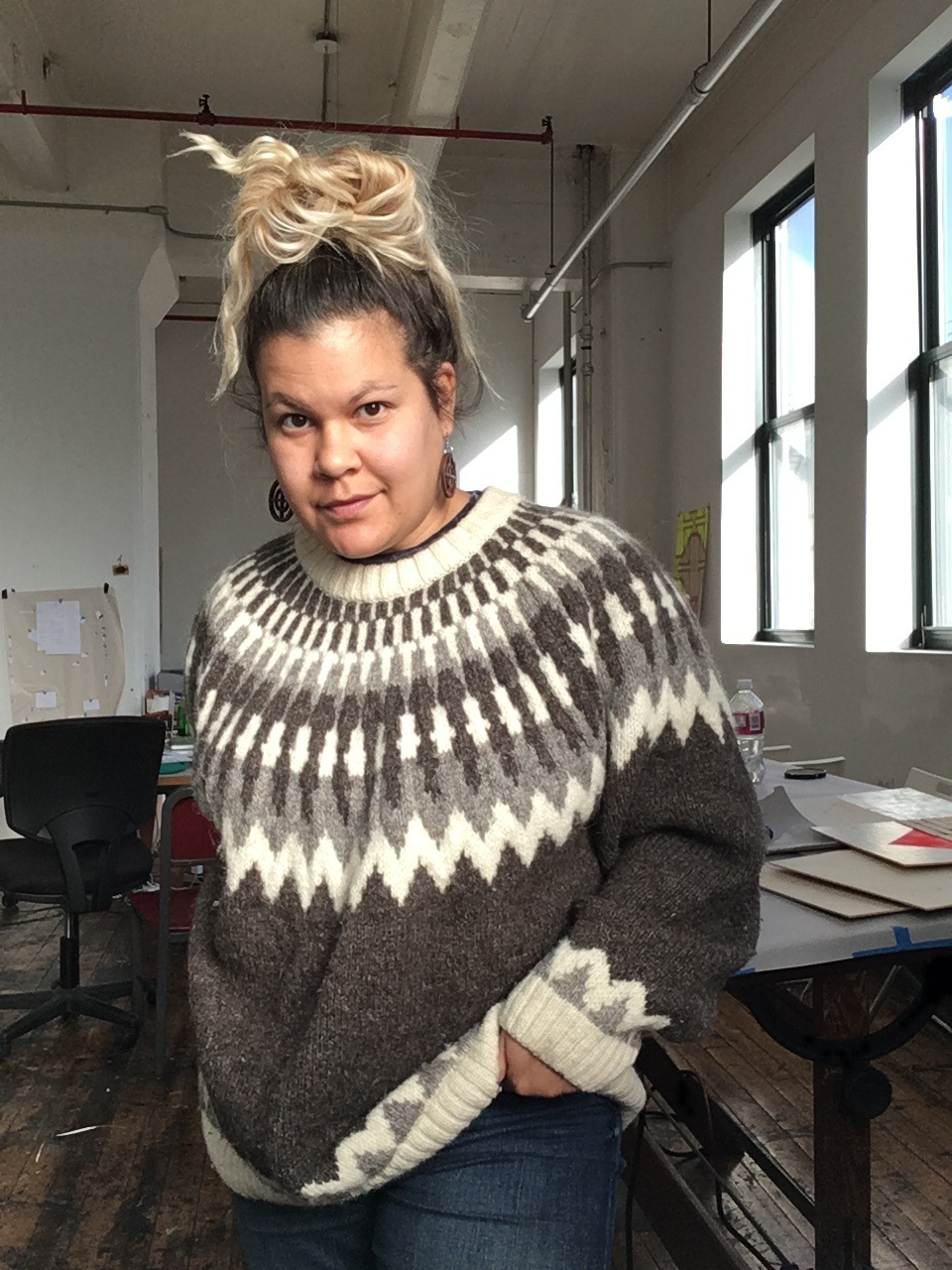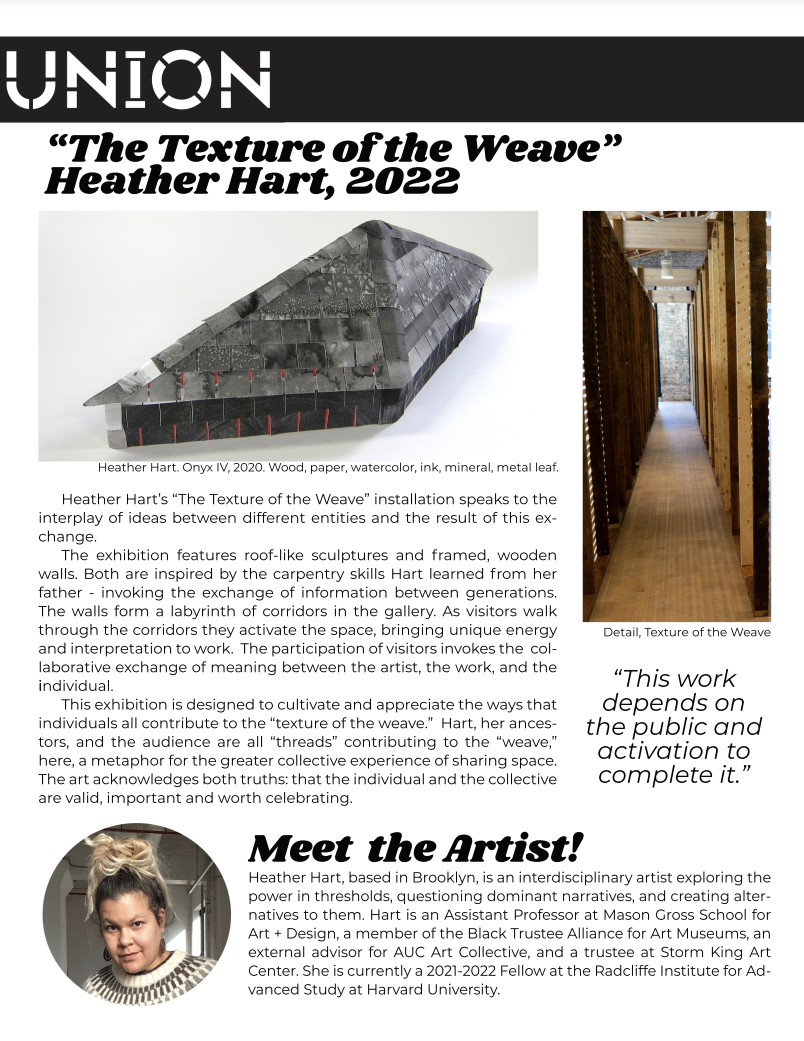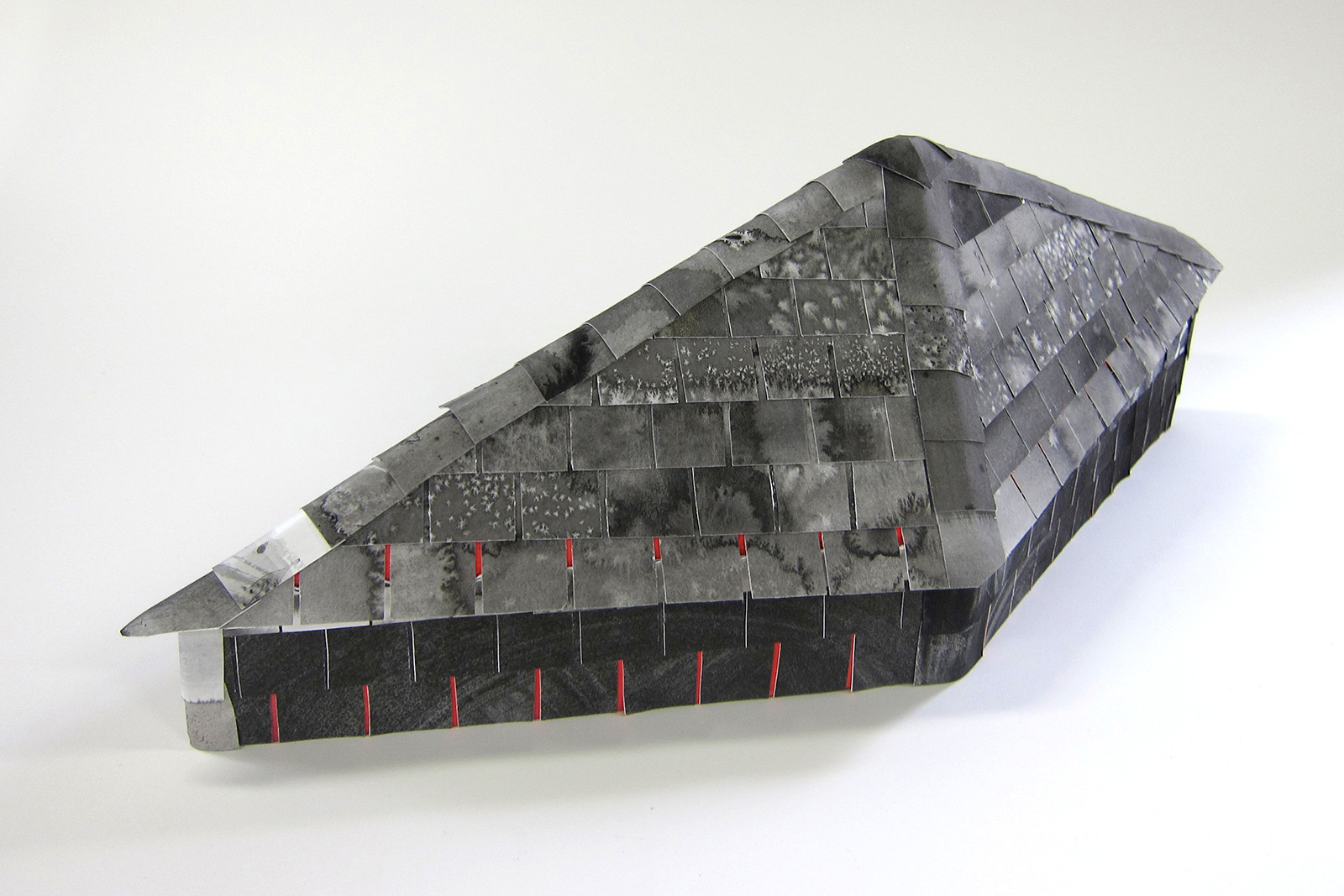“…one of the most engaging problems in architectural history is to understand the social experience of architecture.” – Upton, Dell

This summer, The Union is thrilled to welcome interdisciplinary artist Heather Hart to the Wanda D. Ewing Gallery.
Hart says of her work: "Through my interdisciplinary practice I fuse fabricated and historical belief systems; legends that have been bequeathed through generations mixed with invention and intuition. I ask the public to take some responsibility in the art “viewing” process. Each participant who engages with my work brings their frame-of-reference and ideas to mingle with the environment I offer as a catalyst to create something that lasts longer than the direct art-viewing event. I believe people listen better when they are physically involved in the process of discovery."
About the Artist
Heather Hart, based in Brooklyn, is an interdisciplinary artist exploring the power in thresholds, questioning dominant narratives, and creating alternatives to them. Hart is an Assistant Professor at Mason Gross School for Art + Design, a member of the Black Trustee Alliance for Art Museums, an external advisor for AUC Art Collective, and a trustee at Storm King Art Center. She is currently a 2021-2022 Fellow at the Radcliffe Institute for Advanced Study at Harvard University.
(Above image: Heather Hart. Onyx IV, 2020. Wood, paper, watercolor, ink, mineral, metal leaf.)
Heather Hart - Artist's Statement
Through my interdisciplinary practice I fuse fabricated and historical belief systems; legends that have been bequeathed through generations mixed with invention and intuition. I ask the public to take some responsibility in the art “viewing” process. Each participant who engages with my work brings their frame-of-reference and ideas to mingle with the environment I offer as a catalyst to create something that lasts longer than the direct art-viewing event. I believe people listen better when they are physically involved in the process of discovery.
I found an essay that was based on an interview with my great-grandfather. The son of a slave, he had moved North from Virginia at 17 years old, alone, ten years before the Great Migration. In this essay he mentions the tribe in Africa from which he was descended. I realized this detail was likely fabricated. My great-grandfather had constructed a persona not just to forge his fantastic life, nor for attention, or honor, but like any Black American of his generation, for survival. I instantly felt a relationship to him that I hadn’t noticed before; he too was fabricating belief systems. This persona he created was a graceful blend of fact and fiction, like an oral history that is transformed with each retelling.
With inspirations of this space between the cognitive and mystical, I propose creating an architecture that directs the visitor to physically interact with the work, with each other, with themselves. As an oral history, the method of building is passed from person to person. The form of my work is inspired by traditional framing structures, taught to me as a child by my father. I want to build a piece where the visitor’s physical perspective on their world changes as they interact, as a metaphor for a potential shift in perception. I am interested in not only creating site-specific liminal space but also in questioning dominant narratives and creating alternatives to them.
With this opportunity I’m drawing parallels between forms of oral history; carpentry, but also tropes of quiltmaking as well as fantasy. I’m interested in representation of Black culture in an othered space. I’m interested in the concepts of the Black fantastic, of agency and of legends.
My initial idea is to construct elevated and labyrinth-like pathways to recontextualize space and the body and amplify a context and value system that reflects inherited belief systems and Black power in architecture.
The title quotes a thought of Edouard Glissant when he argues for the right to opacity. That we each have a unique space that may not be meant for others and it is valuable; our unique experience and understanding and translation is irreducible and valid.
“Opacities can coexist and converge, weaving fabrics. To understand these truly one must focus on the texture of the weave and not on the nature of its components. … Thought of self and thought of other here become obsolete in their duality. …. What is here is open, as much as this there. I would be incapable of projecting from one to the other. This-here is the weave, and it weaves no boundaries.” (Glissant, Edouard. Poetics of Relation. p.190.)
Thus, this work depends on the public and activation to complete it. Each interpretation is correct and mine is only one of many. I want my installation to act as my translator between these thoughts and a public.
Materials support for The Texture of the Weave has been generously provided by Habitat for Humanity of Omaha's Restore Deconstruction Program.

Download "The Texture of the Weave" Exhibition Activity Guide
Developed by The Union's Youth Engagement team, exhibition resource + activity guides serve to provide educators, families, and alternative learners with accessible resources and engaging content to further explore topics and themes within past and present Union exhibitions.

3D Tour of the Exhibit
**To zoom in use scroll wheel on a mouse, or pinch and expand on a laptop trackpad.
